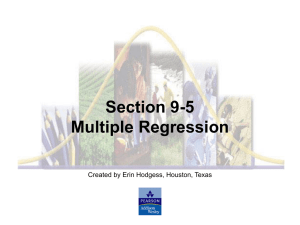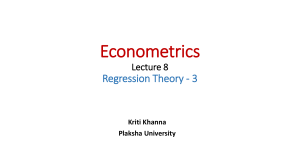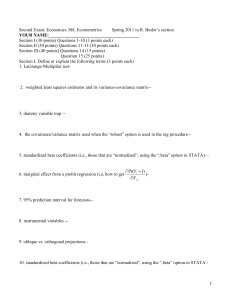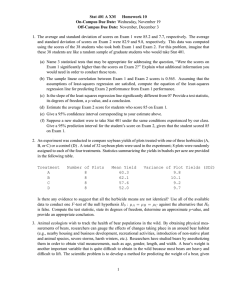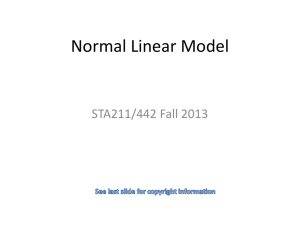Chapter 14
advertisement
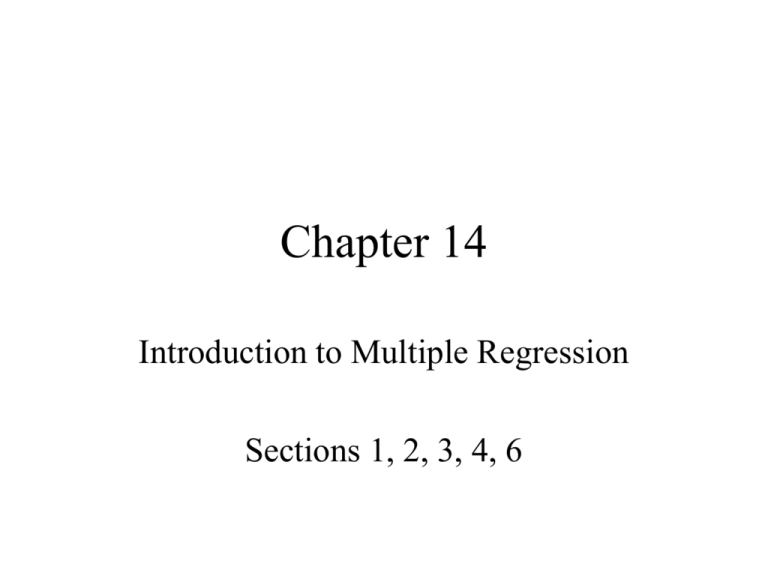
Chapter 14 Introduction to Multiple Regression Sections 1, 2, 3, 4, 6 14.1: Developing the Multiple Regression Model • Often, a better-fitting model of the dependent variable results from using multiple independent variables. • Multiple independent variables means multiple regression. • The “omni-power” example models sales as a function of price and promotion. Software Output • Be able to construct the model from the output. • The technique is still “least squares” because we are assuming a linear relationship between each independent variable and the dependent variable. Notes on Mechanics • We refer to “k” explanatory or independent variables. • A slope coefficient is interpreted as the change in the mean of Y for every change in X1, taking into account the effect of other X (sometimes said “holding all other X constant”). • In multiple regression, this “slope” called a “net regression coefficient.” 14.2: r2, adjusted r2, and the overall F test • R-squared, R2, the proportion of variation in Y explained by the set of explanatory variables in the data set. • R2 will increase every time a new independent variable is added to the regression model, EVEN if the new independent variable is NOT useful. • Use adjusted R2 to compare models. Overall F test • Is there a significant relationship between the dependent variable and the set of explanatory variables? • H0: β1 = β2 = … = βk = 0. • H1: at least one of the β s ≠ 0. • Fcalc = MSR/MSE (formula 14.6) • Table 14.2 defines the test constituents. Use p. 14.3: Residual Analysis for the Multiple Regression Model • Page 580 lists the useful plots. Note that they are the same plots used in Chapter 13. • What are the assumptions? 14.4: Inferences Concerning the Population Regression Coefficients • The hypothesis test for a single slope is the same “t test” used in Chapter 13. • H0: βi = 0 and H1: βi ≠ 0. • 1 tailed tests are possible. • Recommend using the observed significance, i.e. the “p-value.” • Important note on page 583. 14.6: Using Dummy Variables and Interaction Terms in Regression Models • Dummy: Use categorical independent variables. • Interaction: Use products of independent variables.







